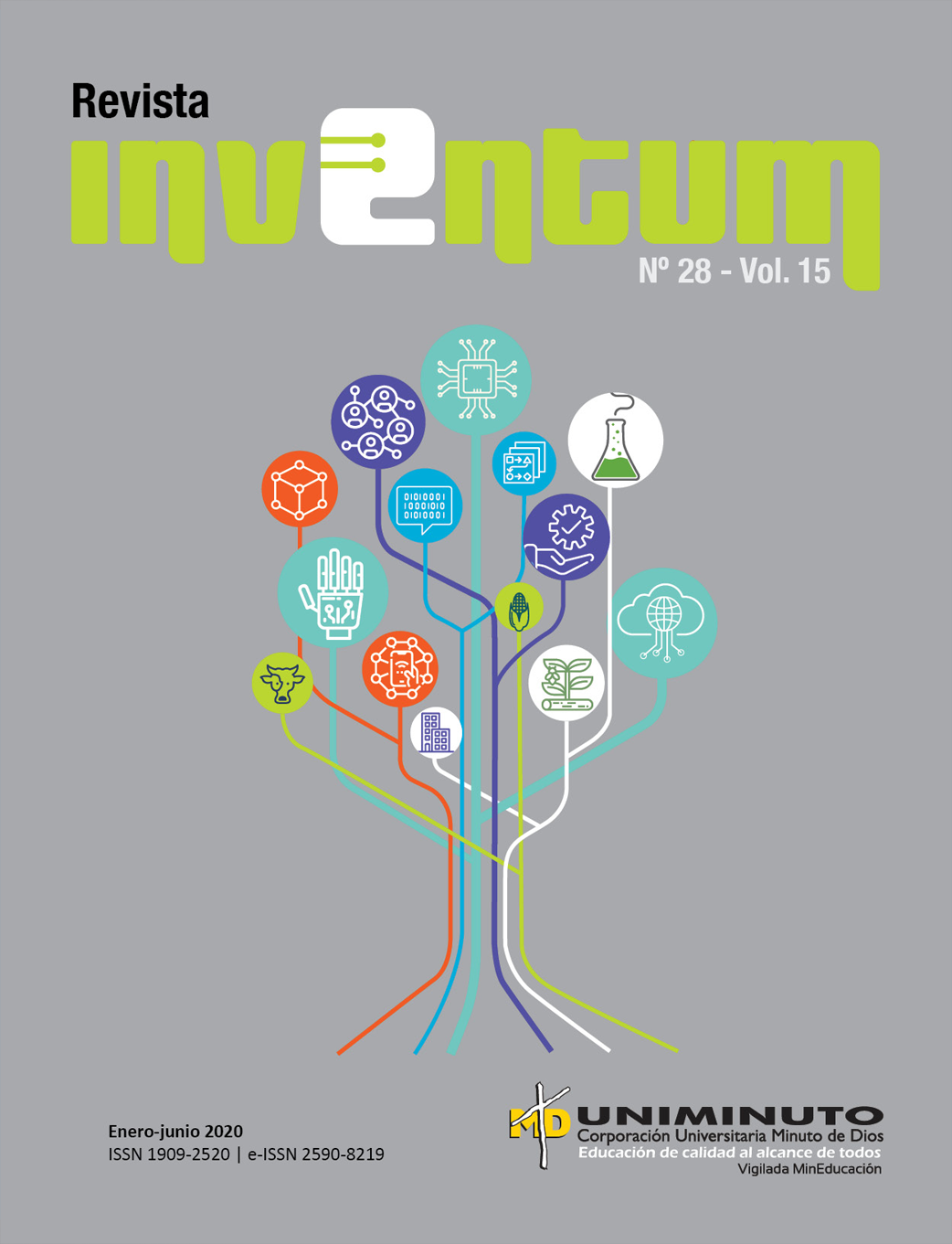Additive manufacturing as a boost of productive systems
Article Sidebar
How to Cite
Altmetrics
Article Details
Se solicita a los autores que diligencien el documento de cesión de derechos de autor sobre el artículo, para que sea posible su edición, publicación y distribución en cualquier medio y modalidad: medios electrónicos, CD ROM, impresos o cualquier otra forma, con fines exclusivamente científicos, educativos y culturales
- La obra pertenece a UNIMINUTO.
- Dada la naturaleza de UNIMINUTO como Institución de Educación Superior, con un modelo universitario innovador para ofrecer Educación de alta calidad, de fácil acceso, integral y flexible; para formar profesionales altamente competentes, éticamente responsables y líderes de procesos de transformación social, EL CEDENTE ha decidido ceder los derechos patrimoniales de su OBRA, que adelante se detalla para que sea explotado por ésta
- El querer de EL CEDENTE es ceder a título gratuito los derechos patrimoniales de la OBRA a UNIMINUTO con fines académicos.
Main Article Content
Abstract
Currently, the development of new products needs to be designed and manufactured with advanced methods to be at the forefront, so a new work approach known as additive manufacturing appears. It is intended in this work a review of the integration of additive manufacturing to new forms of operation, whose main objective is to obtain a precise focus on computer-aided engineering through the finite element method and the processes involved, to thus getting the right product reducing printing costs and processing time.
For this purpose, the use of CAD / CAE / CAM systems is introduced, which means the following: Computer Aided Design (CAD), Computer Aided Engineering (CAE) Computer Aided Manufacturing (CAM) as a design and manufacturing tool for processes. The application of these tools is immersed in Industry 4.0, and this document shows how the generation of three-dimensional models implies, the testing of functionality of prototypes in different situations, as well as helping to obtain reliable results in the design of any technological and innovative system.
References
[2] Company, I. H. (1990). “Systems life cycle engineering”, Manufacturing Technologies, vol, 13, pp. 83-93.
[3] M. O. Coronado, TRIZ, la metodología más moderna para inventar o innovar tecnológicamente de manera sistemática, México. D.F.: Panorama, 2005.
[4] J. Alcaide Marzal, J. A. Diego Más, y A. Ramírez, Diseño de producto. Métodos y técnicas, Valencia: Universidad Politécnica de Valencia., 2001.
[5] Y. Allen, R. (1996), Materials Processing, Journal of Materials Processing Technology, vol. 13 pp. 181-186.
[6] E. A. Abdulrahman Al-Ahmari, Computer-Aided Inspection Planning, EUA: CRC Press, 2017.
[7] L. G. Antoni Garrell, La Industria 4.0 en la sociedad digital, Barcelona: Marge Books, 2019.
[8] D. A. Barclay I. “Concurrent Engineering: Research and Applications. Management and Organizational Factors in New Product Development
(NPD)”, Success, vol. 8, n°. 2, pp. 115-132, 2000.
[9] F. Bianconi, P. Conti, & L. Di Angelo, “Interoperability among CAD/CAM/CAE systems: a review of current research trends”, Geometric Modeling and Imaging--New Trends, vol. 10, n°. 11, pp. 82-89, 2004.
[10] F. Bianconi, P. C., “Interoperability among CAD/CAM/CAE Systems: A Review of Current Research Trends”, Geometric Modeling and Imaging--New Trends, vol. 10, n°. 9, pp. 82-89, 2006.
[11] R. P. Fernández y J. Á. Herrero, “La gestión de la Industria 4.0 a través de las herramientas CAD/CAM/CAE”, Ingeniería Naval, n°. 970, pp. 68-74, 2018.
[12] J. Torres y I. Pastor, “Fabricación avanzada, más allá de la Industria 4.0”, Minsalt, n°. 4, pp. 12-13, 2016.
[13] M. Groover y E. Zimmers, CAD/CAM: Computer-Aided Design and Manufacturing. Prentice Hall International Inc., 2006.
[14] L.L. Delgado, Interacción de sistemas CAD/CAE en estructuras, tesis de grado, Universidad Autónoma de Chihuahua, México, 1994.
[15] M. Groover y E. Z. CAD/CAM: Computer-Aided Design and Manufacturing, New Jersey: Prentice Hill, 2008.
[16] C. Machover, The CAD/CAM Handbook, USA: McGraw-Hill, 1995.
[17] A., Molina y E. T. “Modelling Manufacturing Capability to Support Concurrent Engineering”, Concurrent Engineering: Research and Applications, vol. 3, n°. 1, pp. 29-42,1995.
[18] A. Molina, A.-A., “Research in Engineering Design”, A Review of Computer Aided Simultaneous Engineering Systems, vol. 1, n°. 7, pp. 38-63, 1995.
[19] Moldflow Corporation. (2003). “¿Cómo predecir problemas de manufactura y optimizar procesos de diseño en el moldeo por inyección?”. [En línea]. Disponible en: http://www.plastico.com/temas/Como-predecir-problemas-de-manufactura-y-optimizar-procesos-de-diseno-en-el-moldeo-por-inyeccion+3029748
[20] C. Dym, P. Little, R. Navarra, El proceso de diseño en ingeniería. Cómo desarrollar soluciones efectivas, México: Limusa Wiley, 2002.
[21] O. Putnam, “A redesign for engineering”, Harvard Bussiness Review, vol. 01, pp. 139-144, 1985.
[22] L. K. Keys, “Design for manufacture design for the life cycle engineering”, Fifth IEEE/CHMT International Electronic Manufacturing Technology Symposium, 1988, ‘Design-to-Manufacturing Transfer Cycle, Lake Buena Vista, FL, USA, 1988, pp. 62-72.
[23] R. Udroiu, Computer-aided Technologies. Croatia: IntechOpen, 2016.
[24] I. Zeid, CAD/CAM Theory and Practice. México MacGraw-Hill Inc., 2009.





